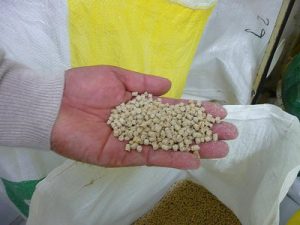Online nutrition database to reduce feed costs
A new online nutrition database promises to deliver increased accuracy and flexibility in formulating least-cost feed and increased precision when using supplemental feed

enzymes. The interactive database contains the non-starch polysaccharide (NSP) content of all feed ingredients fed to poultry in Australia and has been developed at the University of New England, in partnership with PoultryHub Australia and Australian Pork Ltd. This database contains approximately 1300 individual feed ingredient samples from across Australia, including both conventional and unconventional ingredients. Dr Natalie Morgan, Post Doctoral Research Fellow at the University of New England has been developing the database for the past two years. She says ‘This is the first database of its kind in the world and has huge potential to be developed further”. The database enables members from PHA and Australian Pork Ltd to access the NSP values online and include them in their diet formulations.

Fibre is a highly variable and complex component of plant-based feed ingredients and is perhaps the most poorly understood constituent of poultry diets. ‘Crude fibre’ measurements are currently used to indicate dietary fibre content and develop feed formulations, but the analytical methods used to characterise crude fibre are unable to adequately represent fibre utilisation in the animal. It is imperative for future efficiency gain, and hence viability of productive farms, that a more accurate system of estimating true fibre levels is used. This is possible by determining the soluble and insoluble NSP content of feed ingredients. The database includes the soluble and insoluble NSP and free oligosaccharides content of all the ingredients, including the sugar composition, allowing nutritionists to gain in-depth understanding of the types of NSPs arising from the use of different ingredients and the best strategies to deal with them.
Dr Natalie Morgan explains that the database “will enable the industry to make accurate predictions about the true fibre values in diets and allow new technologies to be developed and evaluated. Currently the database features Australian feed ingredients, but we have plans to expand it to include grains from across the globe’.
To request access to the database please go to https://my.une.edu.au/nspdb.


